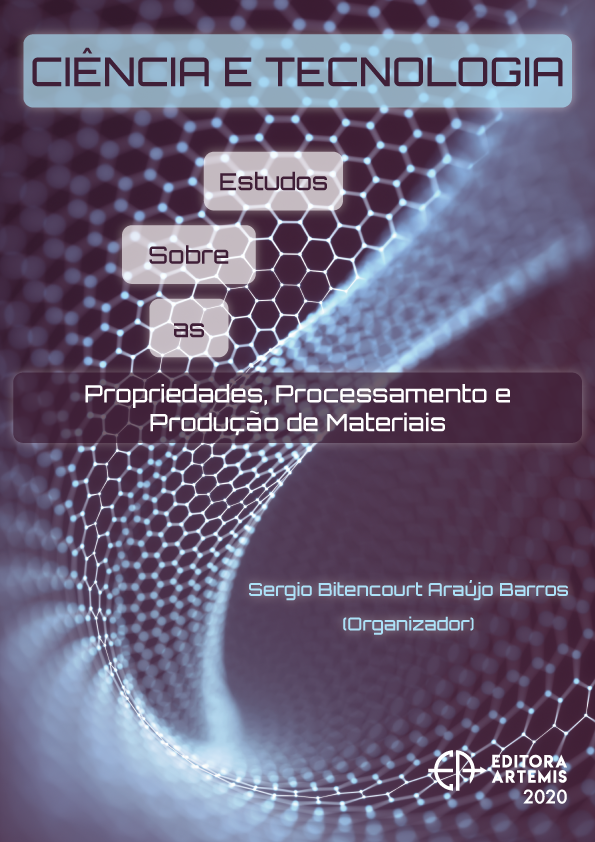
ESTUDO DA CARACTERIZAÇÃO MECÂNICA E TÉRMICA DO PLA PROCESSADO POR MANUFATURA ADITIVA
A Indústria 4.0 vem ganhando destaque nos últimos anos com a implementação de seus pilares tecnológicos dentro das indústrias. Um desses pilares é a Manufatura Aditiva, uma tecnologia que tem como objetivo a criação rápida de peças com formas complexas a partir de um desenho CAD (Computer Aided Design). O Poli (ácido lático) - PLA, é um dos materiais mais usados na fabricação de aditivos técnicos FDM (Modelagem por fusão e deposição), pelo seu baixo custo do material e fácil processamento. O objetivo deste trabalho é verificar a influência do grau de preenchimento nas propriedades físicas e mecânicas do PLA impresso por FDM. Os corpos de prova foram desenhados no software 3D, e o material impresso variando os parâmetros (perímetro e preenchimento) no software de fatiamento. Após, o material impresso foi caracterizado pela técnica de análise térmica realizada por calorímetro diferencial de varredura – DSC e as propriedades mecânicas foram determinadas por ensaio de tração e flexão a três pontos. Foi possível identificar que a resistência mecânica foi superior para corpos de prova que apresentam perímetro e maiores preenchimento das camadas impressas, e deformação plástica superior no corpo de prova com menor preenchimento. A análise térmica comprovou que os filamentos de PLA colorido (amarelo e marrom) necessita de maior fluxo de calor, temperatura de 220°C para que o polímero tenha viscosidade suficiente para passar pelo bico de extrusão sem entupimento devido ao pigmento utilizado para dar a cor ao PLA.
ESTUDO DA CARACTERIZAÇÃO MECÂNICA E TÉRMICA DO PLA PROCESSADO POR MANUFATURA ADITIVA
-
DOI: 10.37572/EdArt_1872610204
-
Palavras-chave: DSC, PLA, Manufatura Aditiva, Ensaio de Tração, Ensaio de Flexão a 3 Pontos.
-
Keywords: DSC, Additive Manufacturing, Tensile Test, 3 Point Bending Test, FDM
-
Abstract:
Industry 4.0 has been gaining prominence in recent years with the implementation of its technological pillars within the industries. One of these pillars is Additive Manufacturing, a technology that aims to quickly create parts with complex shapes from a CAD (Computer Aided Design) design. Poli (lactic acid) - PLA, is one of the most used materials in the manufacture of technical additives FDM (Modeling by melting and deposition), due to its low material cost and easy processing. The objective of this work is to verify the influence of the degree of filling in the physical and mechanical properties of the PLA printed by FDM. The specimens were designed in the 3D software, and the printed material varying the parameters (perimeter and filling) in the slicing software. Afterwards, the printed material was characterized by the thermal analysis technique carried out by differential scanning calorimeter - DSC and the mechanical properties were determined by a three-point flexural and tensile test. It was possible to identify that the mechanical resistance was higher for specimens that have a perimeter and greater filling of the printed layers, and higher plastic deformation in the specimen with less filling. The thermal analysis proved that the colored PLA filaments (yellow and brown) need a higher heat flow, temperature of 220 ° C so that the polymer has enough viscosity to pass through the extrusion nozzle without clogging due to the pigment used to give the color to the PLA.
-
Número de páginas: 17
- MARCOS DORIGÃO MANFRINATO
- Felipe Lopes Fonseca da Silva
- Nirlei Santos de Lima
- Luciana Sgarbi Rossino

